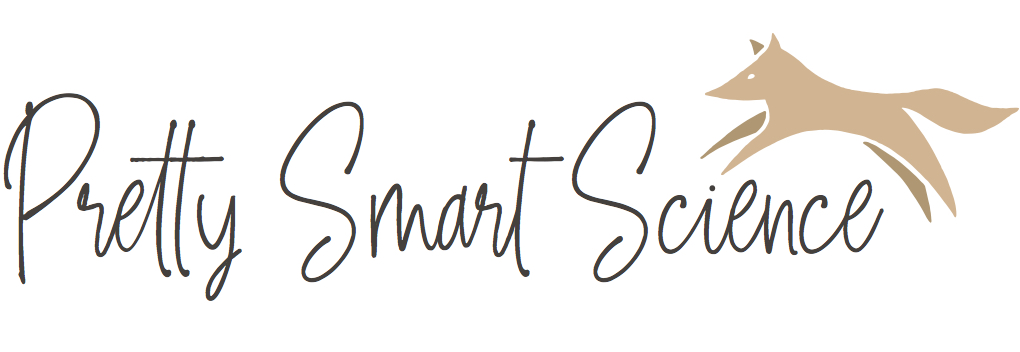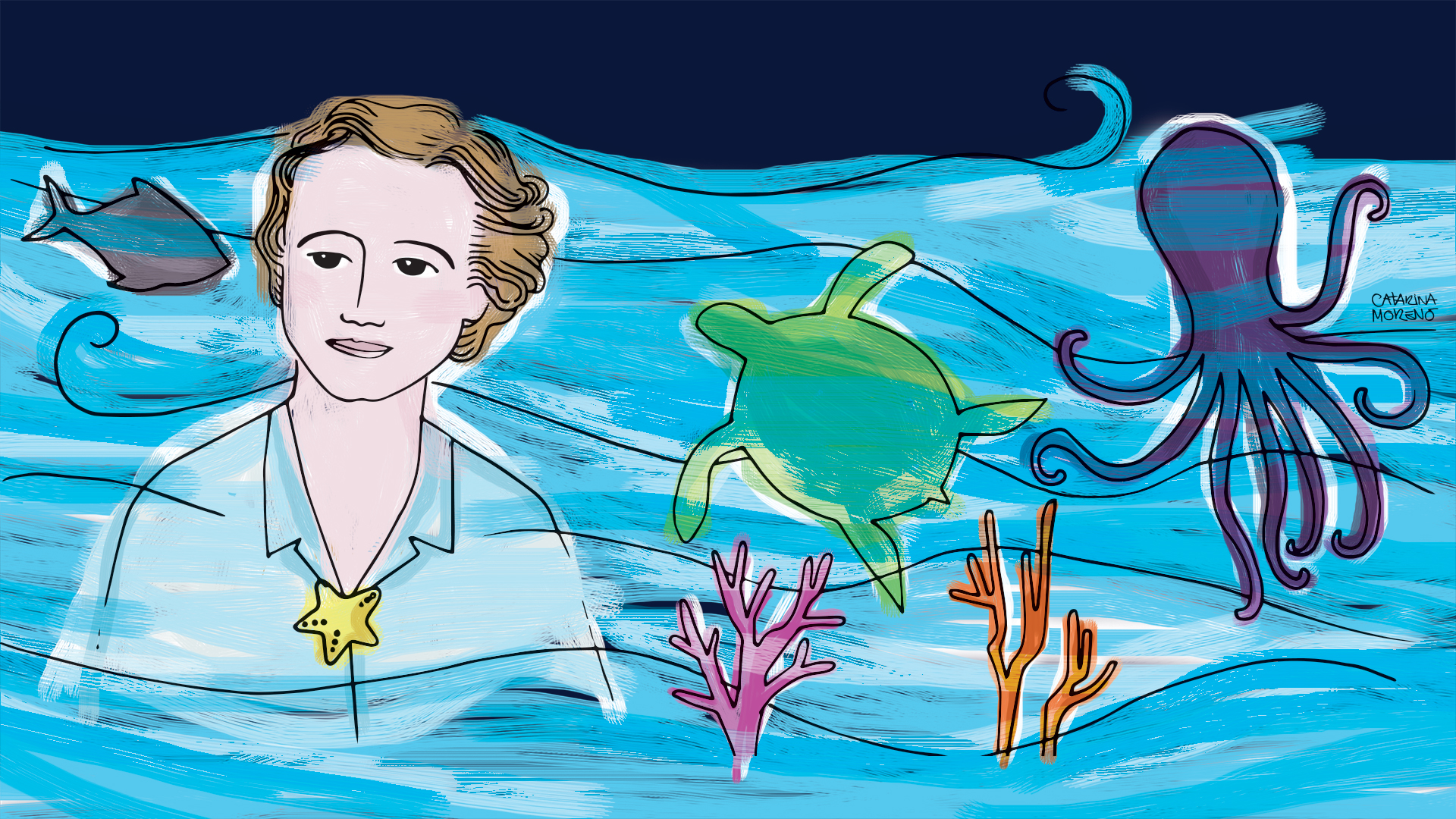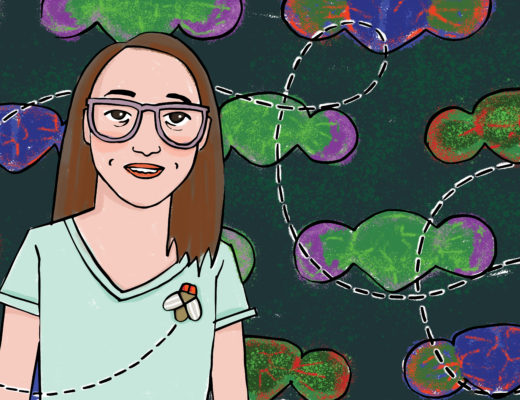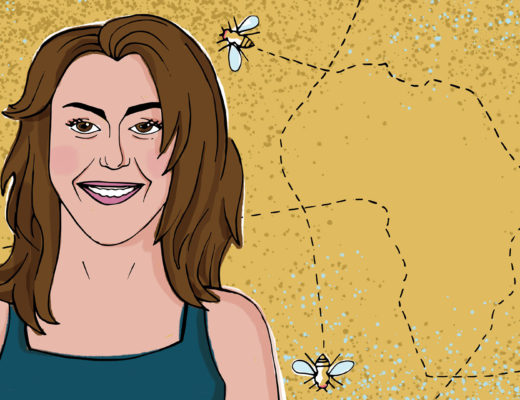Illustration by Catarina Moreno
Rachel Carson (1907-1964) was an American marine biologist and an acclaimed science writer. Her award-winning bestseller Silent Spring (1962), which warns the public about the dangers of synthetic pesticides for wildlife and human health, was instrumental in drawing public and political support for the emerging environmental movement. But despite the importance of its controversial message, Silent Spring owes its success to Carson’s unique storytelling skills.
From writer to biologist and… back again
As a child, Carson enjoyed taking long walks to explore the charming countryside surrounding her hometown in Pennsylvania, US. She also loved writing and drawing, and was only 11 when she became a published author. The young aspiring writer published several illustrated stories in a children’s magazine called St Nicolas, and landed her first paid commission at 14. Famous authors like F. Scott Fitzgerald and Mark Twain also debuted their careers at St. Nicolas, so this was no small feat.
She won a scholarship to study literature at the Pennsylvania College for Women in Pittsburgh and excelled at every discipline, but her plan of becoming an author took an unexpected turn. She was forced to take a couple of compulsory science subjects and, to her surprise, she quickly discovered it was much more fun to spend time in a laboratory than in a library… Carson fell completely in love with biology. With the help of her biology teacher, who later became her mentor and friend, she applied for a scholarship to study at the Marine Biological Laboratory in Woods Hole, where she would take her first steps as a marine biologist.
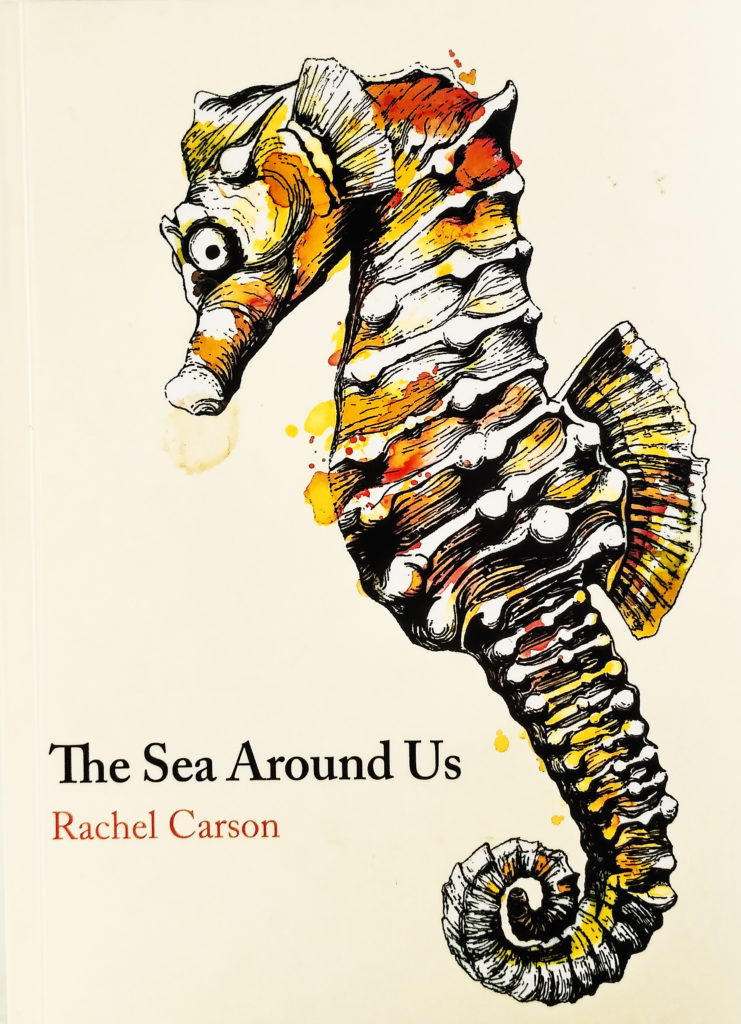
During her entire research career, Carson had to take extra work to support her family. She eventually came across a job at the US Bureau of Fisheries that would turn her life around. She was asked to write scripts for a weekly radio program aimed at educating the public about marine animals, and she absolutely loved it. This job rekindled her love of writing and made her realise it was possible to combine her two passions into one: science writing.
Carson began writing about sea life for mainstream newspapers and gradually became established as a science writer. She had a natural talent to turn scientific facts into beautifully written and engaging stories- to blend science and art. She was also a tireless perfectionist, often editing and rewriting her articles until the day of the deadline.
As her writing career was taking off, the research job at the Bureau of Fisheries wasn’t going so well. Carson was systematically being shuffled between departments because she was a woman, the only woman actually, so nobody wanted to work with her. She was relieved to secure a stable job at the Office of the Coordinator of Fisheries, but she was still frustrated. She knew now she wanted to be a full-time science writer, but after so many years struggling financially, she didn’t want to lose the security of a fix pay-check at the end of the month. Determined to fulfil her dream, she continued juggling her day job with science writing and pushing herself to the limit.
Using words to make change
In her books and essays, Carson narrated enthralling stories about the ocean and its intriguing creatures but also spoke about the dangerous impact of human activity on Earth’s fragile marine ecosystems. During her fieldwork and interviews to scientists, she became increasingly aware of the urgent need to protect the environment from… us. She wrote:
As man proceeds toward his announced goal of the conquest of nature, he has written a depressing record of destruction- directed not only against the earth he inhabits, but against the life that shares it with him.
She spent several years collecting evidence of the harmful effects of dithiothreitol (DTT) on wildlife and human health and then trying to publish her findings, but nobody wanted to see the catastrophe that was taking place right before their eyes. DTT was a pesticide used extensively in the US and Europe during the 1950s because it was effective against hundreds of different pests, while other pesticides could kill only one of two insect species. But the problem was that DTT didn’t kill just insects… After publishing Silent Spring, Carson testified before Congress to call for new policies to protect human health and the environment. In subsequent years, several new environmental regulations were set in place in the US, and the Environmental Protection Agency (EPA) was created.
Despite the smear campaigns ran by the chemical industry against her, Carson had the support of the public and the scientific community: her legacy was untouched. Governments and policymakers could no longer ignore the harmful effects of pollution on the environment and public health. She died from ovarian cancer in 1964, just a couple of years after publishing the book that would change history. She was a nature lover and a passionate biologist, but writing was always her true love. Carson showed us that an inspiring story about science can touch the public and bring about impactful positive change in our society.
Further reading:
E.A. Tremblay “Rachel Carson” book chapter in Women in Science (2003) Chelsea House Publishers
